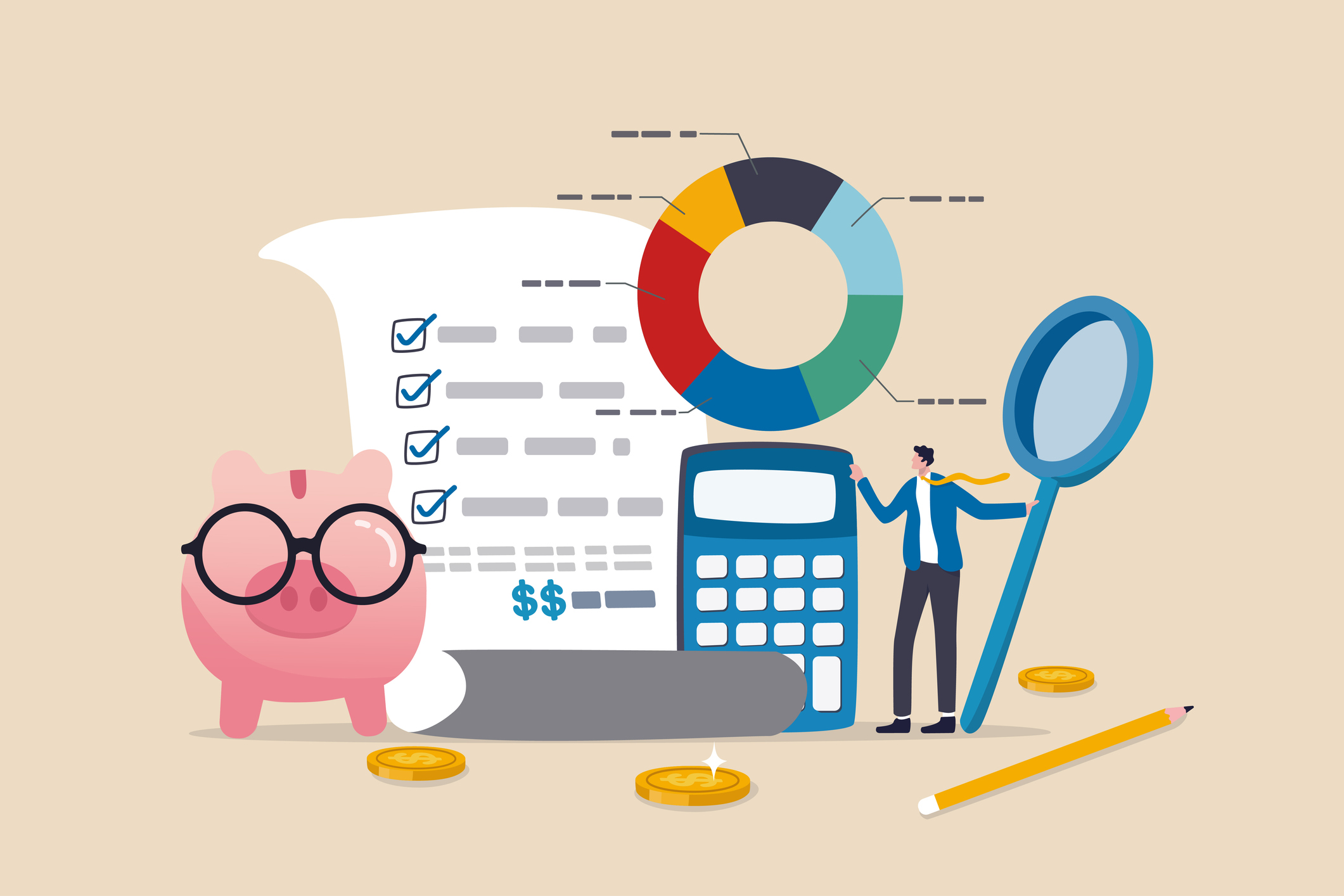The holiday season celebrates getting through the year, giving thanks, and lighting up the dark winter season. But for many people, it’s also about spreading the warmth of giving. The Tuesday after Thanksgiving has even been dubbed ‘Giving Tuesday’ to enshrine the holiday giving spirit! There are ways to bring benefits to both you and your favorite charities if planned giving is part of your financial plan this year.
For many families, giving is a way to bond with younger generations and assure them that their world view and priorities are shared, heard, and valued. This can create stronger bonds and help pass down family traditions.
With markets hovering near all time highs, it can also make sense to take advantage of the charitable deductions available now by speeding up a giving timeline. This is especially true if you plan on gifting appreciated securities.
Giving can be both tax-advantaged and can bring families closer together. We break down some strategies.
Donor-Advised Funds
You may have heard of these but never fully explored it. Donor-Advised Funds (DAFs) are growing in popularity but are still used almost exclusively by those working with a financial advisor. A report from the National Philanthropic Trust showed that contributions to DAFs grew a whopping 80% from 2015 to 2019, making it one of the most popular giving vehicles in America.
How they work
A DAF is set up by you, the Donor, and maintained by a sponsoring organization, such as Schwab or Fidelity, for the benefit of some yet-to-be named charities. The yet-to-be named part of this is the beauty of it all; donors can make gifts without having to name the charity! This is perfect when you want to be charitable but can’t quite decide which charities are most deserving of your money. Because you get a deduction at the time of your gift and not when money is disbursed to charity, you can get the deduction before the December 31st deadline while sorting out who gets what down the road.
Moreover, there isn’t a time limit to when the money must be disbursed! You can make the donation and wait as long as you’d like before doling out the money. You can also dictate how these funds are invested during that intervening period. Exotic things such as art, wine, and real estate can be donated and purchased from within the DAF, but most custodians don’t allow these. Exchange-based investments like stocks, bonds, mutual funds, and ETFs tend to be the preferred investment vehicles.
It’s worth noting however that you can’t undo a contribution to a DAF. The money in that DAF no longer belongs to you. That may feel strange given that its your money sitting in your DAF and invested according to your instructions, but those are the rules. Money in a DAF is viewed just like a check you cut to your favorite charity – you can’t return a few years later and ask for the money back!
How to utilize them
You can set them up at almost any major brokerage house. Just call up and ask for the charity/planned giving department and they’ll get you set up and going. But what and how you donate matters!
Money given to a DAF can be deducted from your taxes, but only if you itemize. The increased standard deduction from the Tax Cuts and Jobs Act of 2017 means fewer people are itemizing. You need to be giving away tens of thousands and/or have other large miscellaneous deductions to get the benefit of a DAF.
Additionally, a donor advised fund typically works best when you gift highly appreciated securities. The securities can be transferred easily, and you don’t have to recognize capital gains on the donation. This allows you to get a charitable deduction, avoid tax on the gains, rebalance your portfolio, and maybe even get rid of old securities that no longer fit your risk tolerance. But take note – you must hold the securities for at least a year before donating in order to get the full market value for the donation. Your deduction will be limited strictly to the basis (i.e. what you paid for it and not any of the growth) if you donate the shares within a year.
Lumping contributions
Because you can donate now and name a charity later, DAFs are great vehicles for “lumping” or “grouping” tactics. This is where you accelerate several years’ worth of gifting into a single year, frequently to offset a year in which you have a heavy income stream. Maybe you sold your house. Maybe it was a business. Perhaps you exercised stock options or earned a career-making commission. Whatever the reason, you can make a large donation to a donor advised fund in a single year and disburse funds over the next several years as desired.
Know the limits
But, be advised that the deductibility DAFs are still subject to the income limitation caps associated with donating non-cash property. This is usually 50% but with plenty of caveats – the rules are messy and complicated. There is also a special 30% limitation that applies to capital gain property, which is the kind of stuff you would donate to the DAF in the first place. You can give as much as you want. There are no limitations there. But the tax benefits generally end at 30% of your income in the case of a DAF. (60% of adjusted gross income limit if you are donating cash to your DAF).
For example, say you make $80,000 a year in retirement and want to donate some shares of AT&T you’ve had since the early 90s. You can gift as many shares as you’d like to your DAF, but you will only get a deduction for the first $24,000 worth as that is 30% of your income. You’ve hit the cap! But not to worry, you can carryforward whatever you weren’t allowed to deduct this year into the next tax year. In fact, you can do this for up to five tax years or until its all gone, whichever comes first.
Now consider your standard deduction. If you’re married this is $25,900 for 2021. In the example above you can only deduct $24,000 of donated capital gain property, which is less than the standard deduction! This means you’ll have to donate other property, like cash or clothes or maybe even an old car, to get you above the standard deduction hurdle. That, or have other deductible expenses you can add to your Schedule A Itemized Deductions form.
Seeing a Donor Advised Fund in action
Tom and Jane just retired. They’ve invested for decades and have several stocks with large embedded gains they’d like to get out of their portfolio. Their church is also undergoing a major renovation and is looking at taking on debt to fund it. They want to help.
They decide to set up a Donor Advised Fund. They’ll move some highly appreciated securities in this year, get the deduction, and will disburse funds next year when the church looks to break ground. Tom and Jane expect to have about $100,000 of income for the year. They can move up to $30,000 worth of securities (i.e. 30%) into the Donor Advised Fund and get the full deduction. They can donate more, but only $30,000 of it will be deductible based on their income.
The standard deduction is $25,900 for them in 2022. If they have no other deductions, they will need to gift at least $25,900 to be able to itemize. And speaking solely from a tax standpoint they shouldn’t go over the $30,000 cap! This is a narrow gifting range. But, if they have other deductible expenses such as mortgage interest, property taxes, or medical bills exceeding 7.5% of their adjusted gross income, they can itemize and hit the $25,900 hurdle rate with a smaller donation.
But they may still want to gift the full $30,000. Their church might need it. It could also push them into a lower tax bracket or keep them at a lower Medicare Part B threshold or Affordable Care Act subsidy threshold.
They can do more if they want to! Tom and Jane can donate other non-cash property up to 50% of adjusted gross income and up to 100% if making cash contributions. If you’re outrageously generous, you can donate even more with a Qualified Charitable Distribution.
Qualified Charitable Distributions
Those over age 70½ can use a Qualified Charitable Distribution (QCD) strategy to provide for charities and reduce their tax burden. A QCD allows you to send money directly from your IRA to a charity of your choice and have it count towards your required minimum distribution (RMD). Critically, a QCD is not an itemized deduction and does not count as a deduction anywhere else on your Form 1040.
The QCD simply allows you to avoid recognizing the income that comes from distributions from your pre-tax IRA. Consider this: you make $110,000 a year in retirement between social security and your pension plans. You turn 72 this year and will have to take your first RMD, which will be about $40,000. The problem? You don’t need the income. You’ll just be taxed.
You can use a QCD to reduce the amount of income you recognize from this distribution. If your QCD was for $10,000, then you would only recognize an additional $30,000 from your RMD. The QCD directly reduces the size of your RMD, which lowers your taxable income for the year, but you do not receive a deduction for the QCD.
Mismatched timing
Required Minimum Distributions don’t kick in until age 72. But you can start QCDs as soon as age 70.5. This is because the Secure Act pushed back your required beginning date for RMDs but left the QCD age untouched. Taking a QCD prior to your first RMD doesn’t therefore offer a deduction. You simply avoid paying tax on whatever comes out of your pre-tax retirement account.
But any QCD done does lower the total size of your retirement accounts, which in turn reduces the size of your required minimum distributions later! It’s a small but added benefit to starting on a QCD strategy prior to your required beginning date.
Not for Donor Advised Funds
You cannot complete a QCD that is made payable to your Donor Advised Fund (DAF). A QCD must have a named beneficiary. Donor Advised Funds don’t have named beneficiaries. They are vehicles set up for you to get a deduction today while naming an end charitable beneficiary later. This means sending money from your retirement account to your DAF won’t be a QCD. Instead, it will be treated as a taxable distribution that you can list on your Schedule A Itemized Deductions when you file your taxes. This is inefficient.
Itemized Deductions are below the line deductions. This means that it’s a deduction from adjusted gross income (AGI) that merely reduces your taxable income. QCDs aren’t a deduction, but they do allow you to avoid being taxed on the money taken from your retirement accounts dollar for dollar. This leads to a lower figure for your adjusted gross income, which is more valuable. AGI is used in many more calculations than your taxable income. A lower AGI can keep you in a lower tax bracket, reduce or eliminate taxable social security, and keep you eligible for other credits that could be lost if you had to recognize the income from required minimum distributions.
Use a DAF for appreciated securities coming from taxable accounts. Use a QCD to reduce the size of your retirement accounts and/or the taxable portion of your required minimum distributions.
Devil is in the details
Most institutions process QCDs through checks. You call up and tell them you want to do QCDs and your custodian sends you a special checkbook solely for that purpose. Everything you write from that checkbook is made payable to a charity and tallied against a running QCD ledger.
Simply writing the check isn’t enough! The charity must also cash it for it to count. The QCD is only considered to be complete when money leaves your account, which means that the charity must also cash the check you send them! This is where it gets tricky.
Its possible that the check you sent gets lost in the mail. The charity may never know about it. Or maybe the charity is working on a shoe-string budget and is short staffed. The check sits in the mailroom for two months before some poor and overworked soul can finally get to it. There are a myriad of reasons why your check may not be cashed or at least cashed before the 12/31 deadline. It is up to you (or your amazing financial advisor) to track this down and ensure it gets cashed!
Lastly, QCDs have a finite limit. They cannot be more than $100,000 in any calendar year.
Don’t Forget, Cash is King!
Giving locally in cash has become a habit for many. Prior to 2017, taking the standard deduction meant that you wouldn’t itemize and therefore wouldn’t get credit for the smaller cash contributions you gave to charities in your local community. This has changed.
You can now claim a small deduction ($300 per individual or $600 if married) on your Federal income tax return for any cash donations you give. You aren’t required to itemize your deductions to get the benefit. These cash donations also count as above the line deductions, which means they reduce your adjusted gross income just like QCDs. 2
Pulling it All Together
Great giving strategies often use multiple tactics and tools. Donor advised funds are fantastic vehicles for donating appreciated securities. They’re also powerful tools to have available in years when incomes are unusually high. QCDs offer great flexibility in retirement, especially for those who were already giving and don’t need the additional RMD income.
Some years you may need to use both a qualified charitable distribution as well as a donor advised fund. Its not an either/or scenario.
Charitable giving is one of the most gratifying parts of a financial planning strategy. It can offer a range of benefits, as long as you stay within the guidelines.










